This article originally appeared in The Texas Tribune: Read More
/https://static.texastribune.org/media/files/d42b8b7499841139561ee6abd6f6d9b7/ATX%20Snow%20Storm%20MG%20TT%2014.jpg)
An eastbound view of East Stassney Lane in South Austin on Feb. 15, 2021.
Credit: Miguel Gutierrez Jr./The Texas Tribune
Ever since last month’s winter weather disaster, Gov. Greg Abbott has worked to lay blame squarely on the state’s electrical-grid operator — despite the fact that it is overseen by the Abbott-appointed Public Utility Commission.
But as state lawmakers dig in on their response to the crisis, Lt. Gov. Dan Patrick is making it harder and harder to look away from the commission, shining a harsh spotlight on Abbott’s people and their decisions.
Last week, Patrick called for the resignation of the PUC chair at the time, DeAnn Walker — and hours later, she called it quits. Then, after a regulatory watchdog told the commission earlier this week that the Electric Reliability Council ofTexas had overcharged power providers by $16 billion during the storm, Patrick demanded the PUC retroactively reduce the costs — and Abbott deemed it an emergency item for the legislative session the next day.
The watchdog later revised its estimate of the overcharges to $4.2 billion, but that did not dampen Patrick’s wrath. The lieutenant governor’s focus on the PUC took its most dramatic turn yet Thursday evening when he showed up at a state Senate committee hearing to personally grill Arthur D’Andrea, the new commission chair tapped by Abbott — and the only member left.
Finally, Patrick ended the week with his most direct challenge to Abbott. In a Friday evening statement, Patrick called on Abbott to “intercede” and replace D’Andrea, daring the governor to abandon his 9-day-old appointee who previously worked as assistant general counsel to Abbott.
Abbott quickly rebuffed Patrick.
Even before Patrick’s statement, Capitol observers said they could not recall anything like the Patrick-D’Andrea showdown in recent memory.
“It’s highly unusual, and I’ve never seen a lieutenant governor come and sit down and participate in a hearing as if he or she were a senator — and also address someone in that way in a public manner — if they do not intend to put pressure on him to resign,” said Sandie Haverlah, a lobbyist for nonprofits. “That clearly is an affront to the governor because D’Andrea serves at the governor’s will.”
Asked before Patrick’s statement Friday if Abbott remains confident in D’Andrea’s ability to chair the PUC, Abbott spokesperson Renae Eze replied, “Absolutely.” And in a letter released after Patrick called for D’Andrea’s ouster, Abbott told Patrick that he agreed with D’Andrea “about his inability to take the action you requested,” referring to the sought-after price correction.
Abbott has been resistant to blaming PUC, which regulates the state’s electric, water and telecommunication utilities, since the early days of the storm, instead choosing to excoriate the Electric Reliability Council of Texas. Asked at a Feb. 18 news conference whether he held any responsibility for the crisis, given his office’s relationship with the PUC, Abbott kept the focus on ERCOT, saying, “I’m taking responsibility for the current status of ERCOT.”
“This is not a word that I would normally use to describe Dan Patrick, but I think he was always a little more circumspect, particularly with regard to ERCOT,” said Adrian Shelley, the Texas director of the consumer rights group Public Citizen. “Abbott was just immediately out there taking cheap shots at ERCOT.”
What is driving the dynamic is the source of growing speculation in Austin. There is a political backdrop: Patrick has never been able to fully shake rumors that he is interested in the governor’s office, despite insisting he would never run against Abbott and repeatedly saying he plans to run for a third term as lieutenant governor in 2022.
In the context of this session, it has been a notable reemergence for Patrick, who kept an unusually low profile in the opening weeks. That began to change in early February, when he picked a fight over playing the national anthem at professional sports games and made preparations to release a list of legislative priorities.
Then came the storm, which left millions of Texans in the cold and dark, raised uncomfortable questions about the state’s power grid and scrambled the agenda at the Capitol.
Patrick said the crisis prompted him to hold off on releasing his priorities for a few days so he could readjust them to reflect newly pressing issues. His list of 31 priorities ended up being topped by “ERCOT reform” and “power grid stability,” coming in second and third, respectively — right after the must-pass budget.
But things changed further for Patrick after Walker and outgoing ERCOT CEO Bill Magness appeared before state House and Senate committees in late February. The lieutenant governor panned their performances in a lengthy statement and called on them to resign, becoming easily the highest-ranking elected official to begin broadening the post-storm blame game to the PUC.
By the end of the day, Walker had submitted her letter of resignation, effective immediately.
Abbott had already called on ERCOT leadership to resign but had not said anything about the PUC. After Walker announced her resignation, Abbott’s office offered a statement thanking Walker “for her years of service to the State of Texas.”
Patrick further increased pressure on the PUC on Monday, when he called on ERCOT and the commission to retroactively reduce the market price for power during the week of the blackouts. The next day, Patrick got backup from 28 of the Legislature’s 31 senators, who sent a letter to D’Andrea — who Abbott had just appointed to replace Walker as PUC chair — urging him “in the strongest possible terms to immediately correct the billing errors.”
D’Andrea and the PUC have declined to do so, citing unforeseen consequences of meddling in an electricity market that has already been settled. D’Andrea held firm to that viewpoint as Patrick questioned him for nearly a half an hour Thursday evening, claiming D’Andrea had told him otherwise in a recent phone call.
In his Friday evening statement, Patrick asked Abbott to “replace Mr. D’Andrea on the PUC when he fills the other two vacancies there.”
“Mr. D’Andrea’s position requires both professional competence and honesty and he demonstrated little of either in the hearings yesterday,” Patrick said. “I believe most Texans who watched the Senate Jurisprudence hearing would conclude that D’Andrea should not have full authority over ERCOT or be part of the solution moving forward.”
Less than an hour after Patrick’s statement, Abbott’s office released the letter to the lieutenant governor. In the letter, Abbott involved his past experience as a state Supreme Court justice and attorney general to back up D’Andrea, and he told Patrick that the governor “does not have independent authority to accomplish the goals you seek.”
“The only entity that can authorize the solution you want is the legislature itself,” Abbott wrote. “That is why I made this issue an emergency item for the legislature to consider this session.”
Not every senator is with Patrick, at least when it comes to the pricing correction. The three senators who did not sign the letter were Sens. Brandon Creighton, R-Conroe; Sarah Eckhardt, D-Austin; and Kelly Hancock, R-North Richland Hills. Hancock told The Dallas Morning News that he wanted to stay neutral in the debate because he chairs the Senate Business and Commerce Committee, which has held the chamber’s post-storm hearings.
Creighton’s office did not respond to a request for comment Friday.
Lawmakers in the House, meanwhile, have taken what they see as a more deliberative approach, with some pledging to “have all the facts” before taking action on the issue.
During a House State Affairs Committee hearing Thursday, state Rep. Chris Paddie, a Marshall Republican who chairs the committee, appeared to take a jab at the Senate’s 28-member letter that asked D’Andrea to reverse the charges.
“Before we take a position or any of us individually send you, sir, a letter or anything else,” Paddie told D’Andrea, “I’m going to be real sure when I sign my name on something that I have all the facts, and that it’s accurate.”
After the hearing, House Speaker Dade Phelan, R-Beaumont, said in a statement he appreciated the committee for its “deliberative examination” of the issue and said he looked forward to another hearing next week on the conversation.
And over the past week, Phelan has floated the idea for legislation that would create a loan fund by drawing money from the state’s savings account, which is also known as the “Rainy Day Fund.” That new fund could help electricity and natural gas producers bolster facilities against future cold-weather events.
The proposal, filed Friday by state Rep. Dan Huberty, R-Houston, is modeled after the State Water Implementation Fund for Texas, otherwise known as SWIFT, which has helped fuel the building of tens of billions of dollars in new water projects in recent years.
In the meantime, it seems inevitable that the heat on the PUC will not recede, despite Abbott’s early efforts to shield his appointees from the storm fallout.
“I think it’d be hard to reach any other conclusion,” said Doug Lewin, a climate and energy consultant. “Clearly Abbott jumped out to say it was them, and I think … Patrick has been beating the drum that it’s ERCOT and the PUC and really putting an emphasis on the PUC.”
Cassi Pollock contributed reporting.
![]()

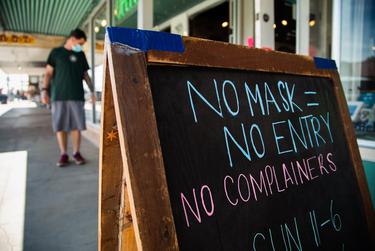
/https://static.texastribune.org/media/files/f9a541744450948e72d6d77a2f45327d/ATX%20Mask%20Signage%20EL%20TT%2013.jpg)
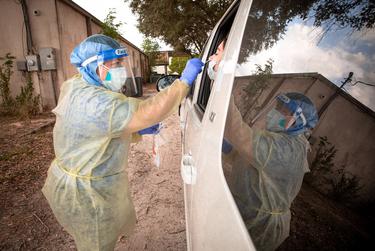
/https://static.texastribune.org/media/files/2b8480849a16798c54523bf560e21af7/Falfurrias%20Flu%20Shot%20JG%20TT%2019.jpg)

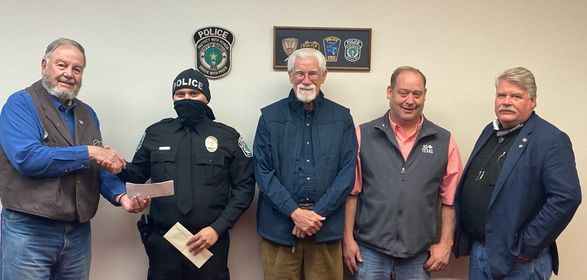
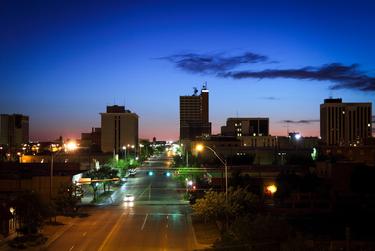
/https://static.texastribune.org/media/files/6ac79be1ee1299c2390091825b25d557/Lubbock%20Skyline%20TT.jpg)
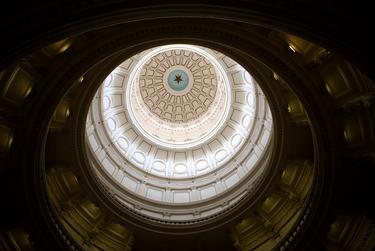
/https://static.texastribune.org/media/files/91fb982015811aa41562a78622267726/Lege%202021%20Opening%20Day%20MG%20TT%2002.jpg)

/https://static.texastribune.org/media/files/07f367fa9833a572ac72d6e6c732c3be/SPI%20COVID%2019%20Spring%20Break%20JG%20TT%2004.jpg)
/https://static.texastribune.org/media/files/a7e93b8676c4dbbb1323abd927179be8/SPI%20COVID%2019%20Spring%20Break%20JG%20TT%2017.jpg)
/https://static.texastribune.org/media/files/4a7d44ac6b858baf9cf4b48fea539e56/SPI%20COVID%2019%20Spring%20Break%20JG%20TT%2006.jpg)

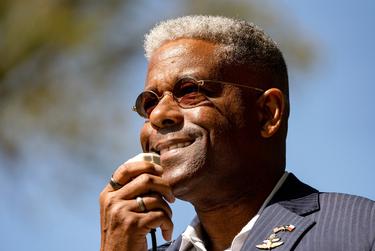
/https://static.texastribune.org/media/files/bb81f02cbc1956d4a6d8db7499024c78/Allen%20West%20JV%20TT%2005.jpg)